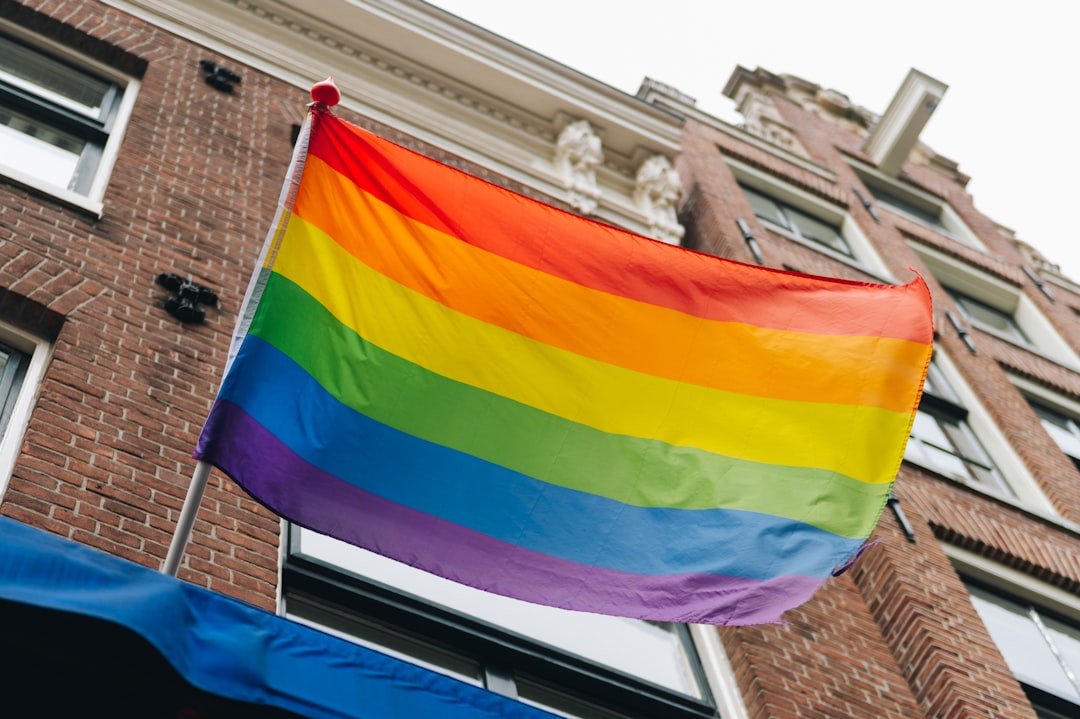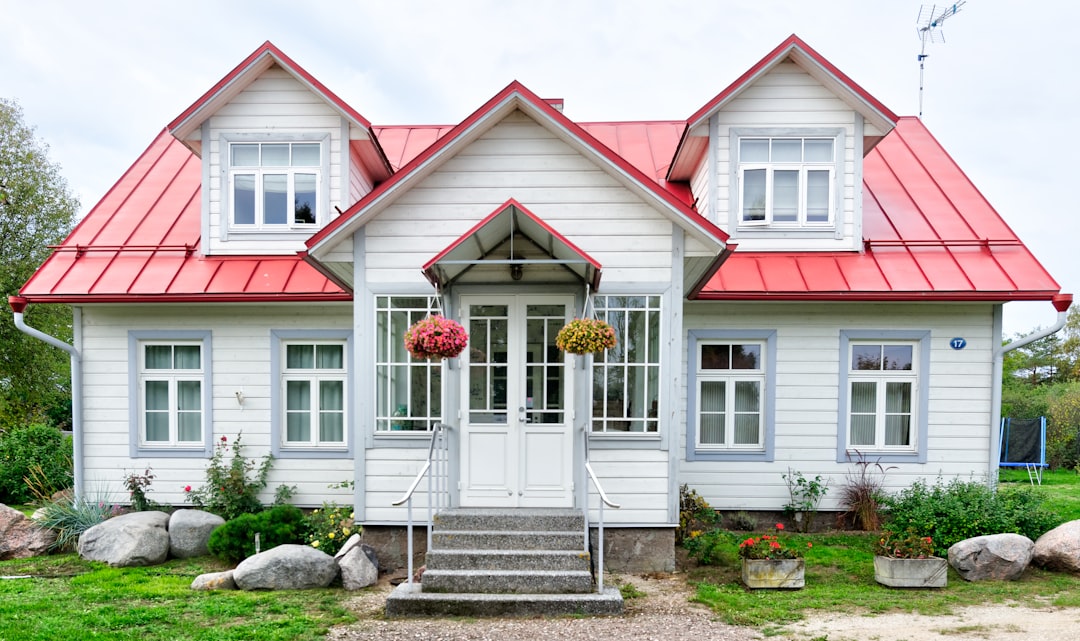Introduction to LGBTQ+ Homeownership Trends
When delving into the current landscape of LGBTQ+ homeownership, it is evident that LGBTQ+ individuals encounter unique obstacles in the housing market compared to the general population. These challenges stem from discriminatory practices, limited support systems, and systemic barriers that contribute to significantly lower homeownership rates among LGBTQ+ individuals. For instance, LGBTQ+ individuals often face hurdles related to community acceptance, experiencing prejudices that can impact their decisions and experiences when purchasing a home. This underscores the critical need for heightened awareness and targeted assistance to address the specific needs of LGBTQ+ homebuyers, ensuring they have equal opportunities in the real estate sector.
For example, recent data has revealed a substantial gap in homeownership rates between LGBTQ+ individuals and their straight, cisgender counterparts, with LGBTQ+ rates trailing by 20 percentage points. This significant difference underscores the challenges faced by LGBTQ+ communities when striving for homeownership compared to the general population. To gain a comprehensive understanding of these disparities and effectively address them, it is crucial for policies and surveys to include specific questions related to sexual orientation and gender identity. By collecting this data, policymakers can tailor strategies and support systems to bridge the gap and promote equitable homeownership opportunities for LGBTQ+ individuals.
Moreover, various factors intricately contribute to the existing disparities in LGBTQ+ homeownership rates. For instance, LGBTQ+ individuals often grapple with higher living costs, especially in states that lack adequate protections for marginalized groups. Additionally, income inequalities rooted in gender identity significantly impact the ability of LGBTQ+ individuals to afford and sustain homeownership. The time constraints faced by LGBTQ+ individuals, coupled with societal challenges, further hinder their capacity to accumulate wealth and secure stable housing. Addressing these multifaceted issues is essential in fostering a more inclusive and supportive environment for LGBTQ+ individuals seeking to achieve their homeownership aspirations.
 Current LGBTQ+ Homeownership Rates
Current LGBTQ+ Homeownership Rates
Recent data has unveiled a notable discrepancy in homeownership rates between LGBTQ+ individuals and their straight, cisgender counterparts, with LGBTQ+ rates trailing by 20 percentage points. This substantial gap sheds light on the challenges that LGBTQ+ communities face when striving for homeownership compared to the general population. To gain a comprehensive understanding of these disparities and effectively address them, it is crucial for policies and surveys to include specific questions related to sexual orientation and gender identity. By collecting this data, policymakers can tailor strategies and support systems to bridge the gap and promote equitable homeownership opportunities for LGBTQ+ individuals.
Moreover, various factors intricately contribute to the existing disparities in LGBTQ+ homeownership rates. For instance, LGBTQ+ individuals often grapple with higher living costs, especially in states that lack adequate protections for marginalized groups. Additionally, income inequalities rooted in gender identity significantly impact the ability of LGBTQ+ individuals to afford and sustain homeownership. The time constraints faced by LGBTQ+ individuals, coupled with societal challenges, further hinder their capacity to accumulate wealth and secure stable housing. Addressing these multifaceted issues is essential in fostering a more inclusive and supportive environment for LGBTQ+ individuals seeking to achieve their homeownership aspirations.
Furthermore, analyses show a significant difference in homeownership rates between LGBTQ+ individuals (51%) and straight, cisgender individuals (71%). This disparity highlights the need to address the underlying factors contributing to lower LGBTQ+ homeownership rates, such as discrimination, financial constraints, and limited access to resources. By acknowledging these disparities and implementing targeted interventions, policymakers and stakeholders can work towards creating a more equitable housing market that supports LGBTQ+ individuals in realizing their homeownership goals.
Challenges Faced by LGBTQ+ Homebuyers
Discrimination within the housing industry significantly impacts LGBTQ+ individuals, leading to a lower homeownership rate of 49% compared to the general population’s 65%. LGBTQ+ Americans often face hurdles in securing housing due to biases and discriminatory practices in the real estate market, making it harder for them to achieve their homeownership goals. For example, transgender and nonbinary individuals may encounter difficulties in accessing appropriate housing options that align with their gender identity, facing additional barriers beyond the typical challenges.
Moreover, the intersectionality of discrimination compounds the challenges faced by LGBTQ+ individuals who are also Black, Indigenous, or people of color. These individuals often experience multiple layers of bias in housing, making it even more challenging to navigate the already complex process of buying a home. Addressing these systemic issues requires a multifaceted approach that involves not only policy changes but also shifts in societal attitudes and practices to create a more inclusive and equitable housing market for all individuals, regardless of their sexual orientation or gender identity. Providing support and resources tailored to the unique needs of LGBTQ+ homebuyers is essential in ensuring they have equal access to homeownership opportunities and can thrive in their chosen communities.
Additionally, biases and discrimination make it harder for LGBTQ+ individuals to buy homes, with challenges in credit history changes, location choices, and facing prejudices from real estate professionals. Discrimination in employment, healthcare, and housing affects LGBTQ+ finances, with LGBTQ+ Americans experiencing discrimination in various aspects of life. The transgender population faces health care access limitations and costs, impacting their finances. Major credit bureaus historically made it difficult for trans and nonbinary consumers to change their first names on credit reports, affecting their credit history. Safety and security concerns influence LGBTQ+ homebuyers’ location choices, with many preferring states with LGBTQ+ rights support. Challenges are intensified for LGBTQ+ individuals who are also Black, Indigenous, or people of color. Resources are available to help LGBTQ+ homebuyers navigate challenges, including LGBTQ+-friendly professionals, referral networks, and knowledge of fair housing laws.
Legal Protections and Rights for LGBTQ+ Homeowners
LGBTQ+ homeowners benefit from legal protections established by fair housing laws and anti-discrimination regulations, aiming to ensure equal opportunities in the real estate market. These laws serve as fundamental safeguards against discriminatory practices based on sexual orientation and gender identity, promoting inclusivity and fairness in homeownership processes. For instance, the Fair Housing Act prohibits discrimination in housing transactions, offering LGBTQ+ individuals a legal recourse if they encounter bias or prejudice during their homebuying journey.
Moreover, the challenges faced by LGBTQ+ individuals who are also part of marginalized communities, such as Black, Indigenous, or people of color, underscore the importance of addressing intersecting discrimination. These individuals often experience compounded barriers due to systemic inequalities, emphasizing the need for enhanced support and advocacy to mitigate disparities in accessing homeownership opportunities. By recognizing and actively working to dismantle these barriers, policymakers and advocacy groups can promote greater equity and inclusivity within the housing sector, ensuring that all LGBTQ+ individuals have the necessary legal protections and resources to pursue their homeownership goals.
In addition to legal frameworks, the availability of resources tailored to LGBTQ+ homebuyers, including access to LGBTQ+-friendly real estate professionals and comprehensive knowledge of fair housing laws, proves instrumental in empowering individuals to navigate the complexities of the real estate landscape. By leveraging these resources, LGBTQ+ homebuyers can make informed decisions, assert their rights, and overcome potential obstacles they may encounter during the purchasing process. This collaborative effort between legal protections, community support, and individual empowerment fosters a more inclusive and supportive environment for LGBTQ+ individuals striving to achieve homeownership.
Furthermore, the proportion of U.S. adults identifying as LGBTQ has been steadily increasing, with Millennials and Generation Z showing higher percentages. NAR’s research on LGBTQ homebuyers and sellers reveals distinct differences compared to Non-LGBTQ individuals, with LGBTQ buyers being more likely to be first-time buyers, have lower median age, income, and purchased home price, and place importance on different factors like convenience to entertainment. Bisexual buyers and sellers also exhibit unique characteristics, such as being younger, more likely to be female, have children in the household, and make compromises on home purchases. Key findings include LGBTQ individuals being more likely to purchase in urban areas, while Non-LGBTQ individuals are more likely to purchase in small towns or rural areas. By understanding these nuances, policymakers and real estate professionals can better tailor their services and interventions to meet the diverse needs of LGBTQ+ homebuyers and promote greater inclusivity in the housing market.
Factors Impacting LGBTQ+ Homeownership Rates
When examining LGBTQ+ homeownership rates, it becomes evident that various factors come into play, shaping the disparities in comparison to the general population. Marital status is one such crucial factor, as it can affect the ability to purchase a home and the financial stability required for homeownership. For LGBTQ+ individuals, who may face discrimination impacting their income and career opportunities, the decision to buy a home can be influenced by their marital status and the legal protections available to them.
Moreover, parenthood is another significant factor affecting LGBTQ+ homeownership rates. The complexities surrounding adoption laws, parental rights, and the societal acceptance of LGBTQ+ individuals as parents can impact their decision to pursue homeownership. Additionally, the intersection of age, marriage, and gender identity further compounds the challenges faced by LGBTQ+ individuals in the housing market, contributing to the existing gaps in homeownership rates. For instance, younger LGBTQ+ community members may have limited time to build wealth compared to their straight, cisgender counterparts, impacting their ability to purchase a home.
Furthermore, income plays a pivotal role in determining LGBTQ+ homeownership rates, with disparities in income levels affecting the community’s overall access to homeownership opportunities. The higher costs of living in states without adequate protections for LGBTQ+ individuals can further exacerbate these disparities, making it challenging for many within the community to achieve their homeownership goals. By understanding how these multifaceted factors intersect and impact LGBTQ+ homeownership rates, policymakers and real estate professionals can work towards creating more inclusive and supportive environments for LGBTQ+ homebuyers.
Additionally, the proportion of Americans identifying as LGBT has increased over the years, with 4.5% in 2017. Many LGBT community members buy homes to invest in real estate and have full control over their living space. Concerns about community acceptance and neighborhood reactions are common among LGBT potential homebuyers. Between 2015 and 2018, nearly 60% of bisexual homebuyers purchased their first home, compared to 36% of gays/lesbians and 32% of heterosexuals. Median home prices paid by bisexual home buyers were around $179,000, lower than the $235,000 paid by heterosexuals. 50% of bisexuals sold their home for the first time between 2015 and 2018, with 68% of gay/lesbian sellers selling detached single-family homes. By considering these factors, real estate professionals can tailor their services to better meet the needs and preferences of LGBTQ+ homebuyers, ultimately fostering a more inclusive and supportive housing market for all individuals.
Resources and Support for LGBTQ+ Homebuyers
LGBTQ+ individuals embarking on the journey of homeownership can rely on a variety of resources tailored to their unique needs. One such essential resource is the availability of LGBTQ+-friendly real estate agents who understand the specific challenges faced by the community. These agents not only provide expertise in the real estate market but also offer a supportive environment where LGBTQ+ individuals can feel understood and valued throughout the home buying process. For instance, LGBTQ+-friendly agents can assist in navigating potential discrimination, ensuring a smoother and more inclusive experience for buyers.
Moreover, referral networks play a crucial role in connecting LGBTQ+ homebuyers with reputable professionals in related fields such as lenders, inspectors, and title companies. By tapping into these networks, individuals can access a pool of trusted service providers who have experience working with LGBTQ+ clients and are committed to promoting a welcoming and respectful environment. This network of support not only simplifies the home buying process but also fosters a sense of community and understanding for LGBTQ+ individuals seeking to fulfill their homeownership dreams.
In addition to real estate agents and referral networks, having a solid understanding of fair housing laws is vital for LGBTQ+ homebuyers. Knowledge of these laws empowers individuals to advocate for their rights and navigate any legal challenges they may encounter during the home buying process. By being informed about their legal protections, LGBTQ+ individuals can make well-informed decisions and confidently move forward in their pursuit of homeownership. Organizations specializing in LGBTQ+ housing needs can provide valuable insights into these laws, ensuring that homebuyers are equipped with the necessary information to make informed choices and protect their interests.
Furthermore, LGBTQ+ homebuyers face discrimination in the housing industry, impacting their homeownership rate of 49% compared to the general population’s 65%. Biases and discrimination make it harder for them to buy homes, with challenges in credit history changes, location choices, and facing prejudices from real estate professionals. Discrimination in employment, healthcare, and housing affects LGBTQ+ finances, with LGBTQ+ Americans experiencing discrimination in various aspects of life. The transgender population faces health care access limitations and costs, impacting their finances. Major credit bureaus historically made it difficult for trans and nonbinary consumers to change their first names on credit reports, affecting their credit history. Safety and security concerns influence LGBTQ+ homebuyers’ location choices, with many preferring states with LGBTQ+ rights support. Challenges are intensified for LGBTQ+ individuals who are also Black, Indigenous, or people of color. Resources are available to help LGBTQ+ homebuyers navigate challenges, including LGBTQ+-friendly professionals, referral networks, and knowledge of fair housing laws.
 Home Buying Preferences and Priorities of LGBTQ+ Individuals
Home Buying Preferences and Priorities of LGBTQ+ Individuals
When it comes to purchasing a home, community acceptance and neighborhood reactions are paramount concerns for LGBTQ+ potential homebuyers, shaping their choices and decisions throughout the home buying process. For instance, LGBTQ+ individuals often seek neighborhoods where they feel welcomed and respected, considering factors like inclusivity, diversity, and safety as top priorities when selecting a place to call home. This emphasis on community acceptance underscores the importance of creating supportive and affirming environments for LGBTQ+ homebuyers, ensuring they can thrive in their chosen neighborhoods.
Moreover, a closer look at bisexual homebuyers reveals intriguing insights into their behaviors and preferences in the real estate market. Data from between 2015 and 2018 shows that nearly 60% of bisexual individuals made their initial home purchase during this period, indicating a strong interest and activity in homeownership within this subgroup. This trend underscores the significance of understanding the nuanced needs and preferences of different LGBTQ+ identities when it comes to buying a home. By recognizing and catering to the unique characteristics and buying patterns of bisexual individuals, real estate professionals can better tailor their services to create a more inclusive and supportive home buying experience for this segment of the LGBTQ+ community.
Furthermore, the proportion of U.S. adults identifying as LGBTQ has been steadily increasing, with Millennials and Generation Z showing higher percentages. NAR’s research on LGBTQ homebuyers and sellers reveals distinct differences compared to Non-LGBTQ individuals, with LGBTQ buyers being more likely to be first-time buyers, have lower median age, income, and purchased home price, and place importance on different factors like convenience to entertainment. Bisexual buyers and sellers also exhibit unique characteristics, such as being younger, more likely to be female, have children in the household, and make compromises on home purchases. Key findings include LGBTQ individuals being more likely to purchase in urban areas, while Non-LGBTQ individuals are more likely to purchase in small towns or rural areas. By understanding these nuances, policymakers and real estate professionals can better tailor their services and interventions to meet the diverse needs of LGBTQ+ homebuyers and promote greater inclusivity in the housing market.
 Advantages of Choosing Arbor Move Real Estate Team
Advantages of Choosing Arbor Move Real Estate Team
The Arbor Move Real Estate Team goes beyond traditional real estate services by focusing on the specific needs and challenges faced by LGBTQ+ individuals in the Ann Arbor housing market. For example, the team recognizes the importance of community acceptance and neighborhood reactions for LGBTQ+ potential homebuyers. By understanding these concerns, Arbor Move Real Estate Team can guide clients towards neighborhoods and communities where they will feel welcomed and supported, enhancing the overall home buying experience.
Moreover, the team’s commitment to providing top-tier professional resources translates into practical benefits for LGBTQ+ homebuyers. For instance, LGBTQ+ individuals often seek assistance from LGBTQ-friendly real estate agents who understand their unique preferences and priorities. Arbor Move Real Estate Team’s expertise in catering to these specific needs ensures that LGBTQ+ clients receive personalized guidance, making informed decisions that align with their values and requirements. By offering a supportive and inclusive environment, the team fosters a sense of trust and reliability, essential elements in the home buying journey for LGBTQ+ individuals.
For more details on how Arbor Move Real Estate Team can assist LGBTQ+ homebuyers in the Ann Arbor area, visit their website at Arbor Move Real Estate Team and start the journey towards homeownership with a trusted and LGBTQ+ friendly real estate partner.
Success Stories and Testimonials
The Arbor Move Real Estate Team has a track record of empowering LGBTQ+ individuals to navigate the housing market successfully. One notable success story involves a young transgender couple who faced challenges finding a home where they felt accepted. With the guidance of Arbor Move, they not only found a welcoming community but also secured a home that aligned with their needs and preferences. This testimonial underscores the importance of having a supportive and understanding real estate team that caters to the unique requirements of LGBTQ+ homebuyers.
In another instance, a bisexual individual shared their experience of purchasing their first home with Arbor Move’s assistance. Despite initial concerns about biases and discrimination, the team provided a safe and inclusive environment throughout the process, ensuring a smooth and positive home buying journey. This testimonial highlights how LGBTQ+-friendly professionals can create a sense of security and trust, essential for LGBTQ+ individuals when making significant investments like buying a home.
These success stories exemplify the commitment of Arbor Move Real Estate Team to providing tailored support and expertise to LGBTQ+ clients. By prioritizing inclusivity, understanding, and respect, the team not only helps individuals achieve their homeownership dreams but also fosters a sense of belonging and empowerment within the LGBTQ+ community. With each testimonial, Arbor Move showcases its dedication to creating a positive and affirming real estate experience for all LGBTQ+ homebuyers. For more inspiring stories and personalized assistance, LGBTQ+ individuals are encouraged to connect with Arbor Move Real Estate Team to embark on their homeownership journey with a trusted and LGBTQ+ friendly partner.
 Call to Action for LGBTQ+ Homebuyers
Call to Action for LGBTQ+ Homebuyers
If you are an LGBTQ+ individual looking to purchase a home and navigate the complex real estate market with support tailored to your unique needs, the Arbor Move Real Estate Team is here to assist you every step of the way. Our team understands the challenges faced by LGBTQ+ homebuyers and is dedicated to providing specialized services to ensure a smooth and stress-free home buying experience. Whether you are a first-time buyer or looking to make a strategic investment, we are committed to helping you achieve your homeownership goals.
By reaching out to the Arbor Move Real Estate Team, LGBTQ+ individuals can benefit from our expertise, personalized approach, and extensive network of reputable service providers in the Ann Arbor housing market. Our team’s unwavering commitment to excellence and customer satisfaction sets us apart as a prime choice for home buying transactions in the LGBTQ+ community. We prioritize your needs and preferences to ensure that you find a home that not only meets your criteria but also aligns with your values and lifestyle.
To explore how the Arbor Move Real Estate Team can support you in your home buying journey, we invite you to visit our website at https://arbormove.com/. Here, you can learn more about our services, browse available listings, and connect with our LGBTQ+ friendly real estate experts. Take the first step towards homeownership today by partnering with a trusted real estate team



 Challenges in LGBTQ+ Homeownership
Challenges in LGBTQ+ Homeownership Resources for LGBTQ+ Homebuyers
Resources for LGBTQ+ Homebuyers Addressing Discriminatory Practices
Addressing Discriminatory Practices
 Impact on Well-being, Safety, and Mental Health
Impact on Well-being, Safety, and Mental Health Role of Local and National Organizations in Addressing LGBTQ+ Housing Disparities
Role of Local and National Organizations in Addressing LGBTQ+ Housing Disparities Funding and Resources for Affordable Housing Programs
Funding and Resources for Affordable Housing Programs
 Introduction to the Ann Arbor Real Estate Market
Introduction to the Ann Arbor Real Estate Market Buying a House in Ann Arbor
Buying a House in Ann Arbor The Advantage of Local Expertise
The Advantage of Local Expertise Financing Your Ann Arbor Home Purchase
Financing Your Ann Arbor Home Purchase Navigating Financial Challenges
Navigating Financial Challenges Why Choose Us
Why Choose Us
 Refreshments Options Detailed
Refreshments Options Detailed Planning Your Visit to the Art Fair
Planning Your Visit to the Art Fair Call to Explore More with Arbor Move Real Estate Team
Call to Explore More with Arbor Move Real Estate Team
 Historical Significance
Historical Significance Event Dates and Location
Event Dates and Location Parking and Transportation Options
Parking and Transportation Options
 Why Choose Arbor Move Real Estate Team?
Why Choose Arbor Move Real Estate Team? Arbor Move’s Expertise in the Ann Arbor Market
Arbor Move’s Expertise in the Ann Arbor Market Building Client Relationships and Transparency
Building Client Relationships and Transparency
 Enriching Community and Culture Through Events
Enriching Community and Culture Through Events Economic Stimulus and Job Creation
Economic Stimulus and Job Creation Evaluation of Community Event Impact
Evaluation of Community Event Impact Encouragement to Engage with Ann Arbor’s Community
Encouragement to Engage with Ann Arbor’s Community
 Boosting Local Commerce Through Event Participation
Boosting Local Commerce Through Event Participation Tourism’s Economic Contribution to Washtenaw County
Tourism’s Economic Contribution to Washtenaw County The Economic Impact of Nonprofit Arts and Culture
The Economic Impact of Nonprofit Arts and Culture Real Estate’s Role in Supporting the Local Economy
Real Estate’s Role in Supporting the Local Economy
 Celebrating Independent Cinema
Celebrating Independent Cinema Prominent Figures and Films
Prominent Figures and Films Community and Cultural Impact
Community and Cultural Impact Why Attend the Ann Arbor Film Festival?
Why Attend the Ann Arbor Film Festival?